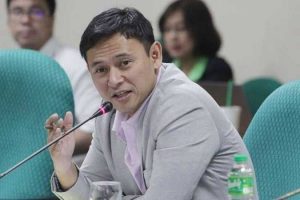PPPs seen allowing LGUs to build amid tight gov’t finances

SENATOR Juan Edgardo M. Angara said President Ferdinand R. Marcos, Jr.’s proposal for local government units (LGUs) to take on public-private partnerships (PPPs) will allow LGUs to pursue infrastructure and digitalization projects even when the government is managing a high debt load.
“A PPP that strikes a balance between public welfare and fiscal responsibility, and of bringing convenience to its users without bloating public debt that they might end up paying for in the end. Such type of financing will allow LGUs to leverage their resources and punch above their weight,” Mr. Angara said in a statement on Wednesday.
“Done right, PPPs will end up being a win-win for both the LGU beneficiaries and the private sector partner,” he added.
Mr. Marcos called increased PPPs “the way forward” during an earlier meeting with officers of the League of Cities of the Philippines, urging them to embrace private funding to achieve their development objectives.
Mr. Angara, who chairs the Senate Finance Committee, cited the need to expand sources of funds beyond the national budget and LGU revenue. “PPP has been proven to be a viable option.”
“PPPs will ensure that vital projects in the pipeline will be implemented in spite of challenges in public financing,” he added.
Speaker Martin G. Romualdez also supports PPPs for local governments, calling it a means of bringing about growth in the regions and generatimg employment and livelihood opportunities.
LGUs can allow private investors to fund and develop public markets, toll roads, hospitals, irrigation systems, and housing areas, he said, adding that based on experience, infrastructure projects are better managed by the private sector.
Former President Rodrigo R. Duterte had steered clear of PPPs, having benefited from record tax collections before the pandemic, with his economic managers also demonstrating a preference for tapping official development assistance (ODA) at a time when the national government’s debt burden was low. — Alyssa Nicole O. Tan




